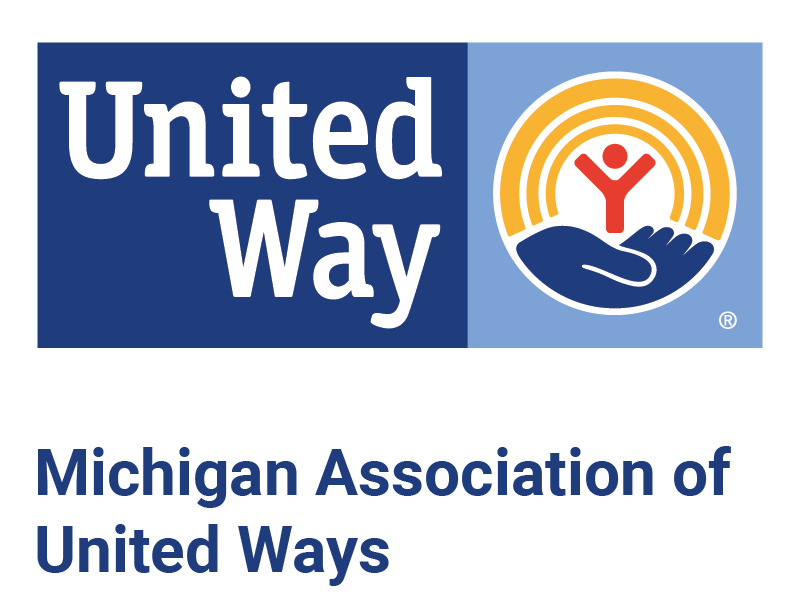
the Alice project
Of 4 million households in michigan
1.5 Million - 39% - struggled to afford
the basics like housing, child care, food, transportation, and health care.
That's why United Ways across Michigan, with help from the Consumers Energy Foundation, have come together to bring you the ALICE Project. Standing for Asset Limited, Income Constrained, Employed - ALICE represents those in our communities who are working yet still struggling to make ends meet.
The ALICE Report is the most comprehensive depiction of need in Michigan to date. In the nine years since the Michigan Association of United Ways has released its first ALICE Report, Michigan residents have started to get a clearer picture of their neighbors, loved ones, friends, and acquaintances than ever before.
Our newest 2023 report details the impact of competing economic forces and public policy interventions during the pandemic on ALICE households in Michigan in 2021 and the impact of the pandemic on financial security continued beyond 2021. This ALICE Report provides the first look at the extent of financial hardship in Michigan using ALICE metrics since the COVID-19 pandemic begins.
THE UNITED WAY ALICE REPORT REVEALS THE MAGNITUDE OF FINANCIAL HARDSHIP IN MICHIGAN.
ALICE households are especially vulnerable to national economic disruptions.
The number of households below the ALICE Threshold in Michigan increased dramatically after the Great Recession (2007 - 2010) and continued to increase through 2018. By 2019, that number had just started to fall - and then the pandemic hit. From 2019 to 2021, the total number of households increased by 2%, but the number of households below the ALICE Threshold increased by 4%.
Persistent racism, ageism, gender discrimination, and geographic barriers create significant disparities across demographic groups.
59% of Black and 44% of Hispanic households were below the ALICE Threshold in 2021, compared to 36% of White households. By age of householder, the youngest (under the age of 25) and oldest (age 65+) households faced the highest rates of hardship. By household composition, 71% of single-female-headed households with children are below the ALICE Threshold, while only 14% of households married with children are below the ALICE Threshold.
70% OF the most common JOBS IN MICHIGAN PAY LESS THAN $20 PER HOUR.
Of the 20 most common occupations in Michigan in 2021, 70% paid less than $20 per hour. Most of these jobs saw an increase in the median wage; for example, the median wage for cashiers increased by 4% from 2019 to $11.38 per hour in 2021. But given that wages had stagnated for a decade, many top jobs still had a substantial percentage of workers who lived below the ALICE Threshold in 2021.
Temporary pandemic assistance weren’t able to bring many households below the alice threshold to financial stability.
In Michigan, a family of four with two parents working full time in two of the most common occupations were only just able to afford the Household Survival Budget in 2021 when including the expanded Child Tax Credit, the Child and Dependent Care Tax Credits, and the Economic Impact Payments. However, two parents working part time were not able to meet the budget, even with the additional public assistance.
far fewer alice households have rainy day funds compared to households above the alice threshold.
In October 2019, only 35% of households below the ALICE Threshold had emergency savings or rainy day funds, compared to 65% of households above the Threshold. By November 2021, the disparity had widened with only 41% of ALICE Households having emergency savings, compared to 74% of households above the ALICE Threshold.
As pandemic assistance Wanes, there are warning signs for ALICE Households.
With pandemic assistance waning while significant challenges remain, there are warning signs that the economic situation for households below the ALICE Threshold has worsened since 2021, including sustained high levels of food insufficiency, feelings of anxiety and depression, and continued difficulty paying bills.
The Bottom Line
Leaving ALICE behind as Michigan and the nation recover from the pandemic sets households and the larger economy up for greater vulnerability to the next economic disruption.
The strength of the Michigan economy is inextricably tied to the financial stability of all residents. As the pandemic has shown, ALICE workers are critical to the smooth running of the economy, during times of crisis and beyond. In turn, the stability of ALICE families depends on their being able to fully participate in the economy. Yet the warning signs show that as of 2022, ALICE’s financial situation has gotten worse.
The pandemic has highlighted the ability of government policymakers and business managers to respond to changing conditions quickly. The 2021 ALICE data may surprise some readers who were expecting much worse. But 2021 was a unique year - and these warning signs are both a call to action and a challenge to complacency. We ignore our essential workers at our economy’s and our communities’ peril.


